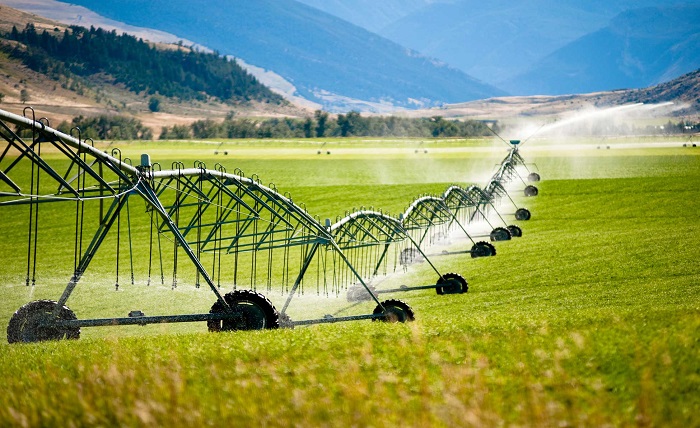Watering your garden can be a breeze—or a burden. The difference often lies in how well your irrigation system is set up. One crucial but often overlooked component is the connectors and fittings that hold everything together. Without them, water flow can be inefficient, leading to wasted resources and a thirsty garden. This blog will explore how optimizing these small components can make a big difference in your garden’s health.
Why Connectors and Fittings Matter
When we think of irrigation, we often picture sprinklers or hoses. However, the real heroes are the connectors and fittings that ensure water reaches every corner of your garden. These small components connect pipes and hoses, allowing water to flow smoothly and efficiently. A poorly connected system can lead to leaks and inefficiency, resulting in water wastage and increased utility bills. By choosing the right connectors, you can maximize the efficiency of your system while minimizing waste.
The Science Behind Water Flow
Understanding the basics of water flow can help you appreciate the role connectors and fittings play in your irrigation system. Water naturally flows from areas of high pressure to low pressure. Connectors and fittings facilitate this flow by creating a sealed pathway for water to travel through. When connectors are improperly fitted or damaged, they can disrupt this flow, leading to pressure drops and leaks. A well-designed system ensures uniform water distribution, preventing overwatering in some areas and underwatering in others.
Types of Connectors and Fittings
Connectors and fittings come in various shapes, sizes, and materials, each serving a specific purpose. Common types include couplings, elbows, tees, and adapters. Couplings connect two pipes, while elbows allow for direction changes. Tees are used to branch off water lines, and adapters connect different pipe sizes or materials. Choosing the right type for your system is essential to ensure a tight fit and efficient water flow.
Materials Matter
The material of your connectors and fittings can significantly impact their durability and performance. Common materials include plastic, brass, and stainless steel. Plastic connectors are lightweight and corrosion-resistant, making them a popular choice for home gardens. Brass offers durability and a longer lifespan, while stainless steel is known for its high-pressure handling capabilities. Consider the specific needs of your garden when selecting materials, as each has its pros and cons.
Custom Plastic Molding for Unique Needs
In some cases, standard connectors and fittings may not meet the specific requirements of your garden. This is where custom plastic molding comes into play. By using custom-designed components, you can ensure a perfect fit for your unique system setup. Custom plastic molding allows you to tailor connectors and fittings to your garden’s layout, optimizing water flow and efficiency.
Installation Tips for Optimal Performance
Even the best connectors and fittings won’t perform well if they’re not installed correctly. Start by ensuring all components are clean and free of debris. Properly align connectors before tightening to prevent leaks. Use Teflon tape on threaded connections to create a watertight seal. Regularly check for signs of wear and tear, such as cracks or leaks, and replace damaged components promptly.
Maintaining Your Irrigation System
Routine maintenance is key to keeping your irrigation system in top condition. Regularly inspect connectors and fittings for leaks or damage. Clean filters and screens to prevent clogs that can disrupt water flow. Adjust water pressure settings as needed to ensure uniform distribution. By maintaining your system, you can extend its lifespan and keep your garden healthy and thriving.
Troubleshooting Common Issues
Even well-maintained systems can encounter problems. Common issues include leaks, low water pressure, and uneven water distribution. Leaks are often caused by loose or damaged connectors; tightening or replacing them can resolve the issue. Low water pressure may be due to clogs or inadequate pipe sizing. Uneven water distribution often results from misaligned sprinklers or clogged nozzles. Identifying and addressing these issues promptly can prevent more significant problems down the line.
The Environmental Impact of Efficient Irrigation
Efficient irrigation systems not only save water but also benefit the environment. Reducing water waste helps conserve this precious resource and lowers your water bill. An efficient system also reduces runoff, minimizing the risk of soil erosion and nutrient loss. By optimizing your irrigation system, you contribute to a healthier environment and more sustainable gardening practices.
Cost-Effective Solutions for Every Garden
While high-quality connectors and fittings may require an initial investment, they can save you money in the long run. Efficient water flow reduces water usage, lowering utility bills. Durable materials reduce the need for frequent replacements, saving on maintenance costs. By investing in the right components, you can enjoy a thriving garden without breaking the bank.
Enhancing Your Garden’s Health
A well-designed irrigation system plays a crucial role in promoting healthy plant growth. Consistent water distribution ensures plants receive the right amount of moisture, preventing issues like root rot or drought stress. Healthy plants are more resistant to pests and diseases, reducing the need for chemical interventions. By optimizing your irrigation system, you create a nurturing environment for your garden to flourish.
Conclusion
Optimizing your irrigation system with the right connectors and fittings can transform your gardening experience. By understanding the importance of these components, you can enhance water flow efficiency, minimize waste, and promote a healthy garden. Whether you’re a seasoned gardener or just starting, investing in quality connectors and fittings can make all the difference. Consider reaching out to experts or exploring custom solutions to tailor your system to your garden’s unique needs.






